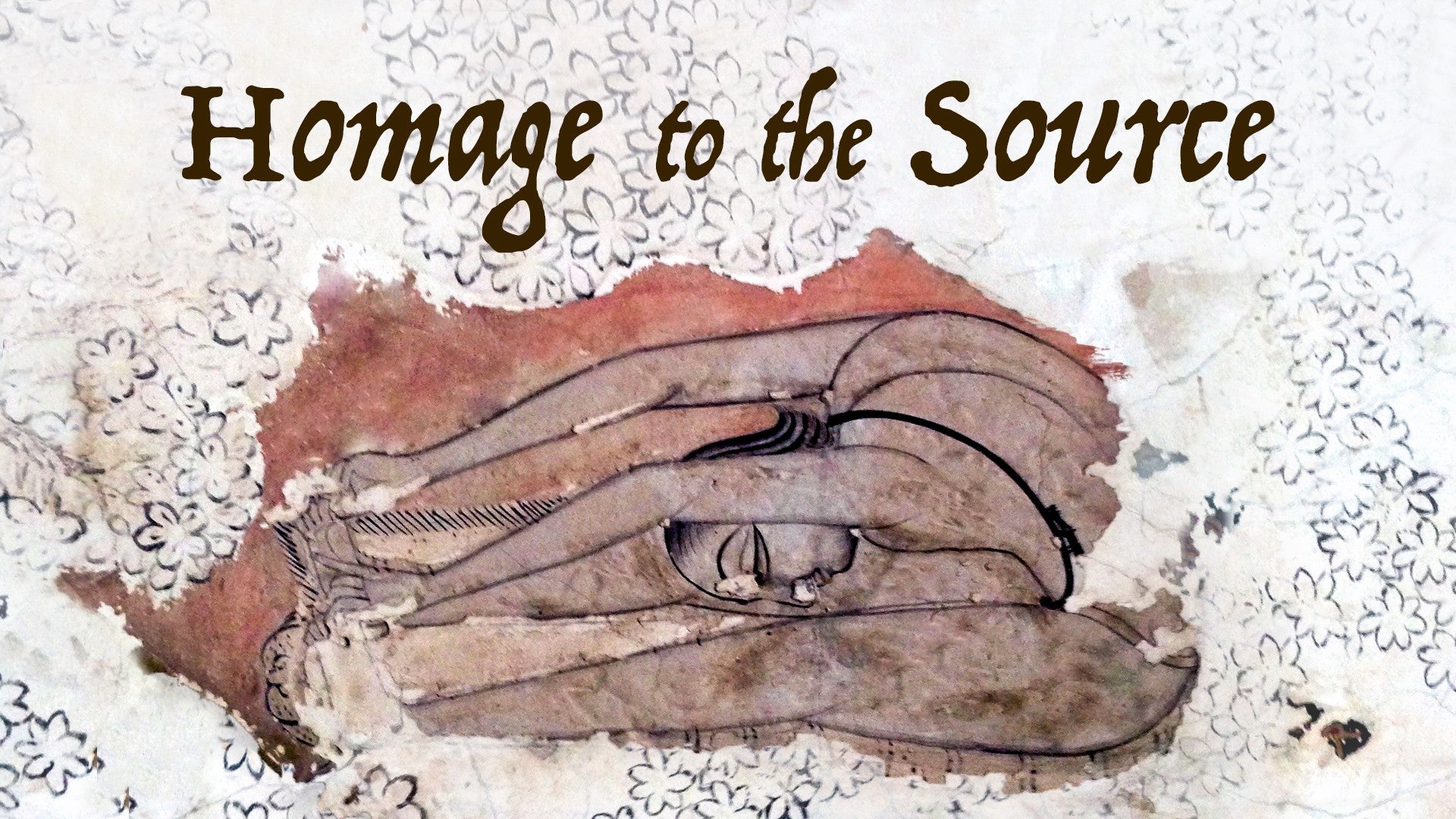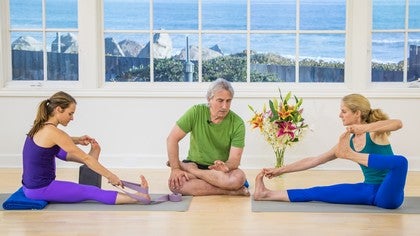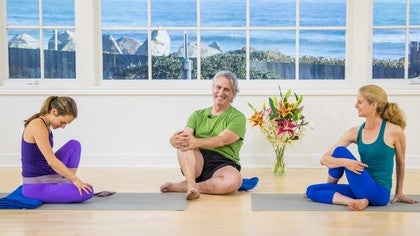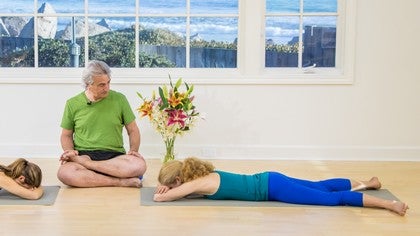Description
This pose is listed not in the Ghranda Samita, but in an earlier text known as The Hatha Yoga Pradipika. Richard, with the help of Alana and Betsy, makes this posture accessible by demonstrating a variation using a block and a blanket.
About This Video
Transcript
Read Full Transcript
Hi, we're here with Betsy and Alana and this pose isn't in the original 32 asanas that are listed in the Gharanda Samhita. This pose is taken from an earlier text, a much earlier text in fact, called the Hatha Yoga Padipika, which was produced sometime in the middle of the 15th century by some estimates, earlier by others. This is interesting because in 1450 this was a sitting pose as you'll see in a moment, but by 1650, 200 years later, it became a backbend. So again, you see the fluidity of the names and the poses in this practice. There was no standardization of names and positions.
So this is Dhanurasana, Dhanu is a bow, the R is added between the U and the A in the name of the pose for euphonic purposes, so it's Dhanurasana. And what I'll have my helpers do is to take the left foot up into the crook of the right elbow and rock the shin back and forth a bit. Now again, you want to push through the inner foot when you have this foot in place to keep the ankle in a relatively neutral position. And you just start by bringing the shin in toward the chest. This is actually a yoga asana, an old one, and I don't remember, it's called something like pressing the shin into the heart.
I don't recall the Sanskrit at this point, but it is an old yoga asana. And then after a bit, you'll start to walk the left sitting bone off to the left a little bit more. So in other words, you open the torso up to the left, very good. And from here, you use the index and middle fingers to grab onto the left big toe. You have the elbow over the knee, yes, that's it.
And I'll ask Betsy to bring the foot up close to the left ear, yes. And I'll ask Alana to do sort of that, but to bring the heel onto the block. It makes it a little bit easier for less flexible students to have the foot supported this way, very good. And then both of you can lean forward. Now Betsy will be able to take hold of the big toe with her index and middle fingers, and Alana can do that too.
But for the time being, what we'll do is ask her to demonstrate how the strap is used around the sole. Here you go. Now this pose is a side bend. In other words, you don't want to keep the two sides of the torso level or even. You can see that Betsy is leaning to the right so that her right side is shorter, and her left side is longer, and you want that to happen.
Very nicely done. And you can shoot the arrow at anybody who you care to. This is the bow pose on the first side. The image that you want to use on this, of course, is the archer pulling back on the bow. And then you can let go of the foot and bring the foot down, you too.
Very nice. And then we'll stretch out into dandas to take a few breaths. And then let's bring the right foot into the crook of the left elbow, and we'll rock back and forth a bit. Now it may be that some of your, if you're using this in a class, that some of your students are not able to bring that foot all the way across into the crook of the elbow. And so it's probably best then to just have them hold the foot in the hand rather than bring it into the elbow.
Very good. And then you can start to walk off to the side a bit, and you too. And then let's have you just swing it this time and see how it goes. You just take the index and middle fingers around the toe. Very good.
Elbow lifted a little bit away from the knee. Very nice. And then good. And then lean to the side. Let's see if you can take the toe this time.
Very good. So you're pushing out through the heel. You know, be careful. If you're tending to hyperextend, you tend to push the heel off the floor when you do that. So if you are a little bit of a hyperextender, be careful not to lift the heel away from the floor.
Yeah, very good. And you pull back on the right foot and push out through the left. You push a little bit more through the base of the big toe. Very good. Very nice.
And this is Dhanurasana, the first version of the pose, which was performed around the middle of the 15th century in the Hatha Yoga Pradipika by a man named Swatmarama, which means he who delights in his own self. And you can delight in your own self in this pose too. Good. And then take an exhalation and shoot. Release.
Come back into Dhanurasana. Very nice. Dhanurasana, 1450. Thank you.
Homage to the Source
Comments
You need to be a subscriber to post a comment.
Please Log In or Create an Account to start your free trial.








